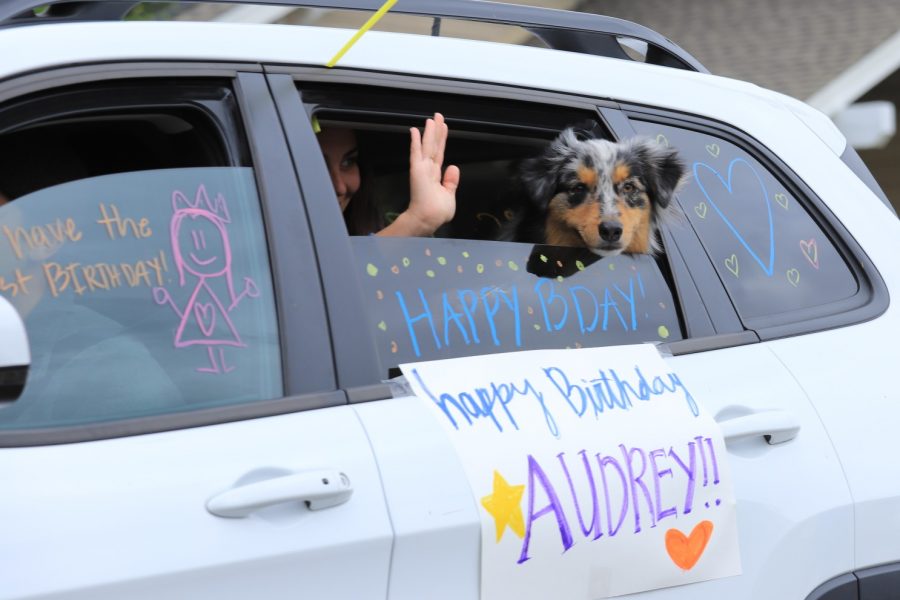Coming Together While Six Feet Apart
Drive-by birthday parties are one of the numerous ways people are connecting with one another while social distancing.
April 4, 2020
The infectious nature of COVID-19 has warranted “social distancing,” the term referring to the recommended six feet distance from others in order to prevent the spread of the virus. Schools, universities, stores, restaurants, and even Disneyland–for only its third time in history–have closed in the name of social distancing, and people around the world are closing themselves off in their homes in a self-quarantine. Despite reduced interactions, however, communities have found ways to bond and unite in one of the most unprecedented times in modern history–all while staying six feet apart.
The population most affected by the coronavirus are the elderly, whose immune systems lack the strength to properly fight off the infection. However, the self-quarantine and rapid store closures have initiated a mass panic which has resulted in customers buying out products in bulk, including essentials such as water and toilet paper. Unfortunately, doing so has exacerbated the situation for the elderly, who not only are forced to minimize their exposure to public places, but also cannot risk competing with the mass crowds at markets.
In order to alleviate the situation for the elderly, supermarkets have implemented special senior hours in the morning which restrict shoppers to only those are above a certain age, allowing older customers to comfortably purchase the products they need without worrying about items running out of stock or interacting with a number of other people. According to USA Today, the stores which have enforced these hours include Albertsons, Costco, Fareway, Fresh Market, Pavilions, Rite Aid, Safeway, Sam’s Club, Target, Trader Joe’s, Vons, Walgreens, Walmart, and Whole Foods. Additional efforts to help senior citizens have been through the simple acts of neighbors and family members shopping for the elderly and dropping off groceries.
Many, however, feel especially limited when it comes to special social occasions, including birthdays. In lieu of parties, however, many have opted for “drive through” celebrations, in which family and friends drive by and honk to show their support. Sierra Lane (12) is excited for her birthday in May despite the circumstances, as “even though [she] would like an in-person celebration with all [her] family and friends, [she] understands that the situation calls for social distancing, no matter the occasion.”
Friends and family have found other ways to socialize without personally seeing one another, namely through video-chatting platforms such as Zoom, Google Hangouts, and FaceTime. Other media sites have also expanded their services to encourage virtual socializing, such as Netflix’s new “Netflix Party,” which allows multiple people to watch a show or movie together with a chat function, according to the Verge.
Remarkable individuals have also taken the initiative of helping their communities by making masks, distributing supplies, and raising money for hospitals. According to the New York Times, people around the world are repurposing fabric to make masks for those who cannot access N95 masks.
Social media has also played a powerful role in both encouraging social distancing and allowing people to connect. Celebrities and influential figures urge their mass followings to stay at home, while the casts of past TV shows and movies have even held virtual reunions to raise money for hospitals and impacted communities. In particular, chain messages have grown popular on Instagram, where users can tag their friends in fun challenges.
In any way, big or small, people have adjusted to social distancing by finding unique ways of connecting with others. The pandemic can offer uncertain challenges, but knowing that others are sharing experiences is one of the most valuable comforts available during these times. As communities continue to distance themselves, the impact from COVID-19 continues to diminish.






































